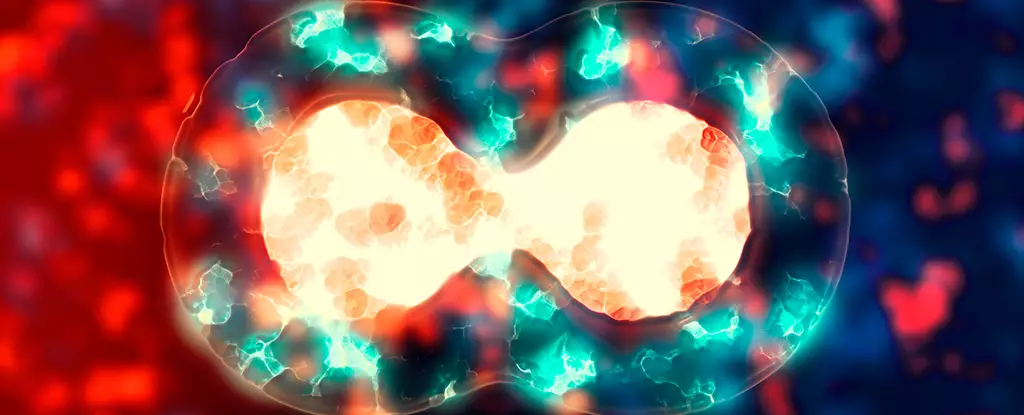Schizophrenia remains one of the most enigmatic and debilitating mental illnesses, affecting approximately 1 in every 300 people globally. This profound disorder, marked by severe disruptions in thought processes, perceptions, emotional responsiveness, and social interactions, manifests predominantly in early adulthood. Current scientific consensus points to a complex web of factors—both genetic and environmental—that contribute to the disorder’s onset.
Recent research has revealed intriguing insights into how the seeds of schizophrenia may be planted long before birth. A groundbreaking study led by Harvard Medical School’s Eduardo Maury has investigated genetic alterations that may arise during the critical window of early gestation. This research goes beyond established theories, suggesting that some forms of schizophrenia may not be inherited at all but rather acquired during fetal development.
New Findings on Genetic Deletions
By analyzing the genetic data from nearly 25,000 individuals—both those diagnosed with schizophrenia and those without—Maury and his team identified two specific gene deletions linked with the disorder. The scientists spotlighted the NRXN1 and ABCB11 genes, which seem to lose critical sections or copies in utero. The implications of this discovery are profound; if certain genetic vulnerabilities can develop before birth, they may pave the way for proactive measures aimed at prevention and early intervention.
Until now, a large part of the research focused on hereditary patterns—particularly the germline mutations passed down from parents to offspring. It’s estimated that these inherited genetic changes account for about 80% of schizophrenia cases, leaving a substantial minority unexplained. In this study, Maury’s exploration into somatic mutations adds an exciting layer to our understanding, recognizing that not all genetic factors labeled as “schizophrenia-related” are inherited but can emerge during the formative stages of life.
The Role of NRXN1 and ABCB11
NRXN1, identified as pivotal in transmitting signals between brain cells, has been previously associated with schizophrenia when inherited. However, Maury’s research reveals worrying trends regarding somatic mutations of this gene. Disturbingly, partial deletions of NRXN1 were found in five schizophrenia cases examined, with none detected within the control group of unaffected individuals. This raises important questions concerning the biological processes during embryonic development and how they impact brain functionality.
The role of ABCB11, on the other hand, remains less understood but equally important. Typically known for encoding a liver protein, mutations in this gene have sparked discussions around treatment-resistant schizophrenia. Maury pointed out that while this association was tenuous, the prevalence of ABCB11 deletions in individuals unresponsive to antipsychotics calls for further exploration. The duality of these findings could help illuminate untapped pathways in schizophrenia treatment and management.
The Urgency of Research and Implications for Prevention
Overall, Maury and his colleagues assert that these genetic variations do play a significant role in the vast tapestry of schizophrenia’s genetic landscape. However, further research is paramount. Understanding how these genetic variables interact with environmental factors could unlock new preventive strategies.
For instance, if medical professionals can ascertain that certain genetic indicators present during pregnancy correlate with elevated schizophrenia risks, they might develop strategies to monitor and perhaps mitigate these risks early on. This could range from dietary and lifestyle adjustments to diligent prenatal care focusing on minimizing traumatic exposures during pregnancy.
Moreover, as society increasingly recognizes the value of mental health, this research emphasizes the necessity for a multidisciplinary approach that marries genetics, psychology, and environmental studies. Schizophrenia’s labyrinthine nature invites contributions from various sectors—be it medicine, policy, or community mental health initiatives—to mitigate its impacts.
Redirecting Focus Towards Early Intervention
To encapsulate the significance of these findings, the emerging concept of postnatally acquired genetic risk factors demands a shift in perception regarding mental health disorders. Perhaps it’s time to look beyond pharmaceuticals and consider holistic preventive measures based on genetic sensibilities. By understanding that predispositions can occur before birth, we as a society must advocate for prenatal wellness programs prioritizing mental health.
Such initiatives could transform existing frameworks surrounding mental health, underscoring the importance of addressing psychiatric disorders from a biological foundation. As researchers continue to uncover the complexities of diseases like schizophrenia, the clinical implications of this journey are momentous: they could lead us closer to prevention and, ultimately, a future where fewer lives are drastically altered by this haunting condition.

